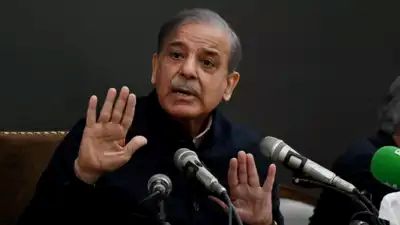Pakistan’s Deputy PM Ishaq Dar Announces Extension of India-Pakistan Ceasefire Until May 18
In a significant development, Pakistan’s Deputy PM Ishaq Dar announced that the ceasefire agreement between India and Pakistan along the Line of Control (LoC) has been extended until May 18. This decision comes as both nations continue diplomatic efforts to maintain peace amid ongoing tensions.
The extension follows previous ceasefire agreements aimed at reducing cross-border hostilities. But why did India agree to ceasefire this time? Analysts suggest that both countries are keen to avoid further escalation while addressing security concerns.
The Role of Pakistan’s Deputy PM Ishaq Dar in the Ceasefire Extension
Deputy PM Ishaq Dar has been at the forefront of diplomatic efforts to restore peace in the region. His announcement regarding the ceasefire extension underscores Pakistan’s commitment to maintaining stability along the Line of Control (LoC) and the international boundary. Dar emphasized that the decision to extend the ceasefire was made to provide both nations with an opportunity to engage in meaningful dialogue and prevent further escalation.
The Fragile Ceasefire Between India and Pakistan
The India-Pakistan ceasefire has been a critical yet unstable element in bilateral relations. The latest extension indicates cautious optimism, but historical precedents show how quickly tensions can reignite.
Key Points of the Ceasefire Agreement
- Temporary Truce: The ceasefire is a short-term measure to prevent skirmishes.
- Diplomatic Engagement: Backchannel talks may be influencing the decision.
- Security Concerns: Both nations aim to curb infiltration and militant activities.
Source: TRT World
Recent Escalations and the Need for a Ceasefire
The ceasefire extension follows a period of heightened tensions triggered by the Pahalgam terror attack, which resulted in significant casualties. In response, India launched “Operation Sindoor,” targeting multiple terror camps across the border. Pakistan retaliated with “Operation Bunyan-al-Marsoos,” leading to a series of exchanges that brought both countries to the brink of war. The initial ceasefire agreement, reportedly brokered with U.S. involvement, was a critical step in halting hostilities.
Why Did India Agree to Ceasefire?
India’s decision to extend the truce has raised questions. Here are possible reasons:
1. De-escalation Efforts
- India has consistently emphasized the need for peace but maintains a zero-tolerance policy towards cross-border terrorism. The ceasefire allows both sides to assess security dynamics.
2. International Pressure
- Global powers, including the U.S. and U.N., have urged restraint. A prolonged ceasefire could ease international scrutiny.
3. Domestic Stability
- With elections and internal security priorities, India may prefer temporary calm on the borders.
Ceasefire India-Pakistan: A Fragile Yet Necessary Step
While the ceasefire extension is a positive development, its fragility cannot be overlooked. Previous ceasefires between India and Pakistan have been marred by violations and mistrust. Both nations must take concrete steps to ensure the current ceasefire holds, including:
- Enhanced Communication: Regular communication between military and diplomatic channels can prevent misunderstandings and manage incidents effectively.
- Confidence-Building Measures: Implementing measures such as joint patrolling and information sharing can build trust.
- Addressing Core Issues: Engaging in dialogue to resolve longstanding issues, particularly concerning Kashmir, is essential for lasting peace.
Pakistan’s Deputy PM Ishaq Dar’s Statement
Pakistan’s Deputy PM Ishaq Dar confirmed the extension, stating:
“Both nations have agreed to uphold the ceasefire till May 18, reinforcing the commitment to regional stability.”
His remarks suggest Pakistan’s willingness to engage, though India remains cautious given past violations.
Will the Ceasefire Hold?
While the extension is a positive step, challenges remain:
- Trust Deficit: Past ceasefires have collapsed due to alleged violations.
- Militant Threats: Groups operating from Pakistani soil remain a concern for India.
- Political Posturing: Hardliners on both sides may oppose prolonged peace talks.
International Reactions and the Path Forward
The international community has welcomed the ceasefire extension. The United Nations, the European Union, and neighboring countries have expressed hope that this development will lead to sustained peace in South Asia. However, the onus remains on India and Pakistan to capitalize on this opportunity and work towards resolving their differences through diplomacy
Conclusion
The extension of the India-Pakistan ceasefire until May 18, as announced by Pakistan’s Deputy PM Ishaq Dar, is a crucial step towards de-escalating tensions in the region. While challenges remain, this development offers a window for both nations to engage in constructive dialogue and pave the way for lasting peace. The coming days will be critical in determining whether this ceasefire can serve as a foundation for improved bilateral relations.

